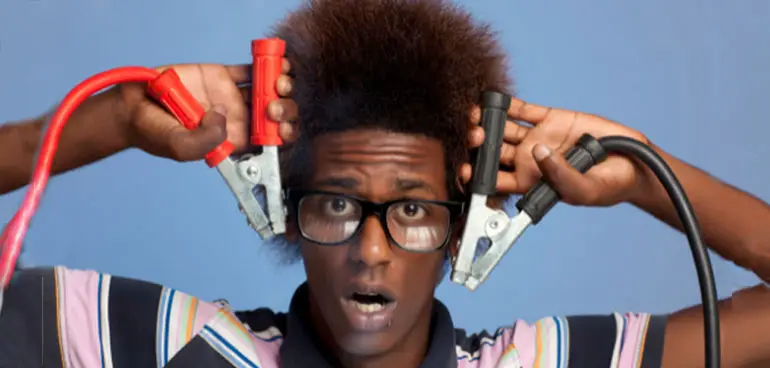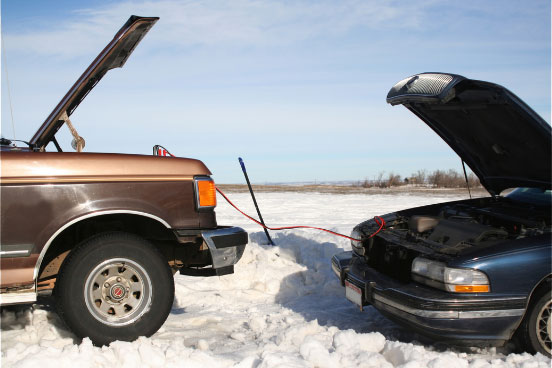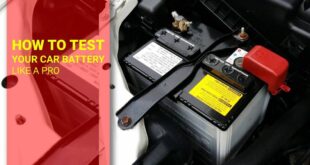It’s one of the most misunderstood technical questions that many people have a hard time answering. If you’re wondering, can you jump a car in the rain, you’ll also want to know how to protect yourself for obvious safety reasons. This short but highly informative guide will answer many issues on how to jump start a car battery in rainy or bad weather conditions.
IS IT BAD TO JUMP START A CAR?
This is a growing concern for car owners who have a car that is produced after the year 2000. Since many newer cars have computerized electronics, there is more risk to frying these sensitive components if you attempt jumping off a car using standard jumper cables. The jumper cable setup is not the only concern when safely jumping a car battery. The main concern is the voltage spike that can easily cause both batteries more damage as a result.

To safely jump start a dead battery, the best jumping car guide is to follow practical rules, so you don’t damage either vehicle. The proper way to jump a car is to follow a jump car cable order list, starting with both vehicles turned off. The cables are then attached in this order:
1) Attach the positive clamps first
The red clamp is positive, and the black is negative, so there is no other jumpstart battery order needed to determine what is positive or negative. Your dead car battery is connected first and then followed by attaching this to the positive on the helper car battery.
2) Connecting the negative clamps
The helper car will now connect the negative clamp to the opposite terminal on their car battery. You can now safely attach the opposite negative clamp to any metal ground on your car engine. This should be any metal part of your engine block so that this acts as an electrical ground.
3) The helper car starts their engine
With an electrical supply that is now constant from a helper car, this will safely jump start a dead battery right away. Allow your car to run for at least 20 minutes to help recharge the drained battery. You need to disconnect the cables in the reverse order they were placed. This begins with removing the negative clamp from your engine block and then the negative on the helping car.
The helper car then removes the clamp from their positive connection followed by yours. This further reduces the dangers of jump starting a car and avoiding electrical fluctuations.
• Does jumping a car hurt the battery?
If you follow the correct order of jumper cables, there is no danger involved, and is the safest way to jump a car. There are some issues involved when bad weather is involved when asking ‘how does jumping a car hurt your battery’. This always involves rainy weather and jumping a car in the rain. This next section helps you understand the potential dangers involved and how you can avoid them, and will also answer the most important question about can you jump a car in the rain?
IS IT SAFE TO JUMP A CAR IN THE RAIN?
A lot of people are asking how to jump start a car in the rain but are worried about safety issues. The first issue has a lot to do with a general fear of being shocked or even electrocuted. So should you jump start a car in the rain without worry? The answer is as simple as it gets when it comes to how jumper cables are attached. They must be connected according to the order that ensures your safety.

Because we live in a world where the internet is often filled with poorly researched websites, many younger drivers are unaware of basic car troubles. A lot of the rumours that have no scientific proof are clearly leaving more people stranded on the road when it’s raining. Here are perfect examples that you’ll see on Google the most:
• Are car batteries waterproof?
Car batteries are built with a water-resistant protective coating. They aren’t meant to be submerged in water. This is where many people think that cars jumping in the water (especially the rain), are going to cause a car battery to become dangerous if it gets wet. Perhaps this is why a car battery is covered by the hood of a car. Even when it rains, the car hood still acts as a protective cover when it lifts up.
A little bit of water in the form of raindrops is simply not enough to damage your battery unless there is an endless downpour. Can a car battery get wet in the rain? The answer is yes and won’t affect the charger cables if you are holding the rubber clamp edges only.
• Can you get electrocuted in a car?
Cars are carefully insulated on the inside of the car’s cabin and are designed this way for safety reasons. If your car is struck by lightning, the electricity is diverted into the ground rather than electrocuting the driver and passengers. If you’re wondering- can you get electrocuted by a car battery’, it’s simply not possible. Because of the low voltage, you are more likely to get a shock, but there is a big catch to this.
To get shocked, you would need to be touching both battery terminals at the same time. This is how electricity works to connect any electrical connection, so the risk of being shocked is avoided if you use one hand on your battery at a time.
CAN YOU JUMP A CAR WHILE ITS RAINING?
There are two ways that you can jump a car in the rain that are perfectly safe in wet weather. The first includes the standard jumper cables, and the second is an electrical jumper box. To jump start car battery units is no different from following the rules for your general safety. It’s better to know how not to jump a car improperly because of the electronics and onboard computers that could potentially be damaged.
But for safety’s sake, is jumping another car bad for yours? The same principle applies either way you go, if you jump start in the rain, jumping in heavy fog, and even jumping a car in the cold. Having moisture in the air including rain, snow, sleet, and foggy drizzle is no more dangerous if you follow the battery connections in sequence each time.


